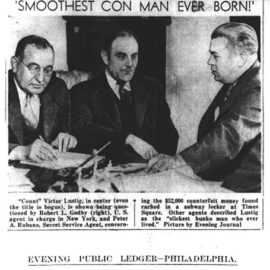

This article is an excerpt from the Shortform book guide to "She Comes First" by Ian Kerner. Shortform has the world's best summaries and analyses of books you should be reading.
Like this article? Sign up for a free trial here.
What are foreplay and after-play? Why are they just as important as the act of intercourse?
Clinical Sexology doctor Ian Kerner defines foreplay and after-play as forms of sexual play that are essential in relationships. These methods can help you and your partner get aroused while also cooling down when necessary.
Keep reading for Kerner’s explanations of foreplay and after-play, as described in his book She Comes First.
Foreplay
Foreplay and after-play are two completely different sexual activities, but are both necessary for a healthy sexual relationship. Kerner defines foreplay as everything that comes before clitoral stimulation. He explains that stimulating your female partner before touching her clitoris is necessary because women require anticipation to become properly aroused.
(Shortform note: Kerner says that foreplay—stimulating your partner before touching her clitoris—is fundamental for a sexual encounter because women require anticipation to become properly aroused. This is because whereas sex begins in the body for men, sex begins in the mind for women. This is due to the different levels of testosterone between men and women. Testosterone is the hormone that causes physiological desire and is typically much higher in men than in women. Consequently, women need more mental stimulation—what Kerner calls anticipation—than men to get sufficiently aroused.)
Kerner recommends several techniques to pique her anticipation and arousal:
- Drop hints throughout the day with sexy messages, phone calls, whispers, and touches.
- Fantasize together—talk about the things you both crave and incorporate them into your next session. For example, lingerie, restraints, candles, music, and so on.
- Touch her body tenderly—romantic touches such as stroking her hair, kissing her forehead, or rubbing her feet can increase mental and physical arousal.
Touch her body sensually—touching sensual areas like her breasts, nipples, inner thighs, and labia majora once she’s aroused can quickly intensify her anticipation. Kerner adds that using artificial lubrication can help.
Kerner says sufficient foreplay should last at least 10-15 minutes, and you should wait until her arousal and anticipation have peaked before moving to cunnilingus. However, he notes that the typical indications of arousal like natural vaginal lubrication aren’t always accurate indicators—some women may get wet without being very aroused, and others may be very aroused but not very wet. To more accurately judge when to move to the next step, look for changes in her breathing pattern (like irregular breathing) and tightening of her abdominal muscles.
(Shortform note: Kerner notes that you should engage in foreplay for at least 10-15 minutes before your female partner will be sufficiently aroused, and research seems to mostly corroborate these claims. Researchers asked 152 heterosexual couples to report on how long they wanted foreplay to last and how long their foreplay actually lasted. On average, women wanted 19 minutes of foreplay and reportedly spent 11. Men wanted an average of 18 minutes of foreplay and reportedly spent 13. The average amount of time spent, 12 minutes, falls within Kerner’s 10-15 minute range.)
Foreplay Is an Ongoing Process
Kerner explains that foreplay can be an extended process that starts to build sexual tension hours before a sexual encounter. This was a newer idea in 2003 when She Comes First was published, as foreplay had previously been considered the sexual activities that come immediately before sex. Since the book’s publication, other sex experts have developed Kerner’s concept of foreplay even further.
While Kerner extended the amount of time the foreplay process lasts before sex, some experts now define foreplay as an ongoing process or cycle that continues throughout a relationship—it begins after the last orgasm, continues until the next one, and then starts again immediately after. This is because instead of conceptualizing foreplay as a set of arousing activities and behaviors that come before sex, as Kerner and many others do, they view foreplay as the mood you live in with your partner and an energy that runs through your relationship.
Whereas Kerner recommends activities that will help you engage in foreplay (sexy hints, fantasizing, tender physicality, and sensual physicality), these experts argue that the best way to practice foreplay is by embracing a specific mindset that shapes how you view your partner and your relationship. If you adopt a playful, inquisitive, and sometimes teasing mindset, it will keep your relationship in a near-constant state of flirtation and anticipation, stave off dullness, and allow you to handle conflict without turning to contempt.
After-Play
Kerner explains that women can orgasm repeatedly, so once she’s achieved her first orgasm, you can move on to other forms of sexual play that will make you orgasm as well. However, before moving on, give her a few minutes to cool down. To do this, return to foreplay activities—kiss her, embrace, and share soft touches.
(Shorform note: While Kerner says your partner will need a short cool-down period before being ready for sexual stimulation again, experts explain that this isn’t the case for all women. While most women do need a short refractory period, some are able to have something called “rolling orgasms”—these are orgasms that lead seamlessly into one another. So rather than moving on to focus on other parts of her body after her orgasm, she may want you to maintain clitoral stimulation.)
When she’s back to her aroused state, you can move on to other forms of play such as penetration. Kerner says certain positions can improve her likelihood of having another orgasm, such as having her on top facing you. This will press her clitoral head against your pubic bone and stimulate her internal clitoral nerves with your penis.
(Shortform note: While vaginal penetration is a great way to produce multiple orgasms after cunnilingus, experts recommend a few other options. For example, you may want to try anal penetration—this will stimulate the penis while providing a different form of stimulation to your partner. You can also try exaggerating your breathing or syncing your breathing with your partner’s.)
When your session is over, make sure to give your female partner proper aftercare. Whereas men are usually tired after orgasm and want to sleep, women want to maintain intimacy. To sustain and deepen your sexual relationship, spend 10-15 minutes cuddling or talking.
(Shortform note: Kener says that to continue having good sex in the future, you should cuddle, talk, and spend some time together after your session. While after-care is important and you don’t need to hop out of bed immediately, experts note a few more post-sex tasks that are necessary if you want to have good sex in the future. (1) Clean up—wash your hands, genitals, and any sex toys you used. This will prevent possible infections that can make sex painful. (2) Go pee—bacteria can enter your urethra during sex and cause uncomfortable infections. (3) Wear loose clothing—tight clothing can create a moist, warm environment where bacteria like yeast thrives.)

———End of Preview———
Like what you just read? Read the rest of the world's best book summary and analysis of Ian Kerner's "She Comes First" at Shortform.
Here's what you'll find in our full She Comes First summary:
- Why traditional sexual practices leave women unsatisfied
- Why men should ensure their female partner orgasms first
- An instruction manual on how to satisfy women and engage in the best sex possible






